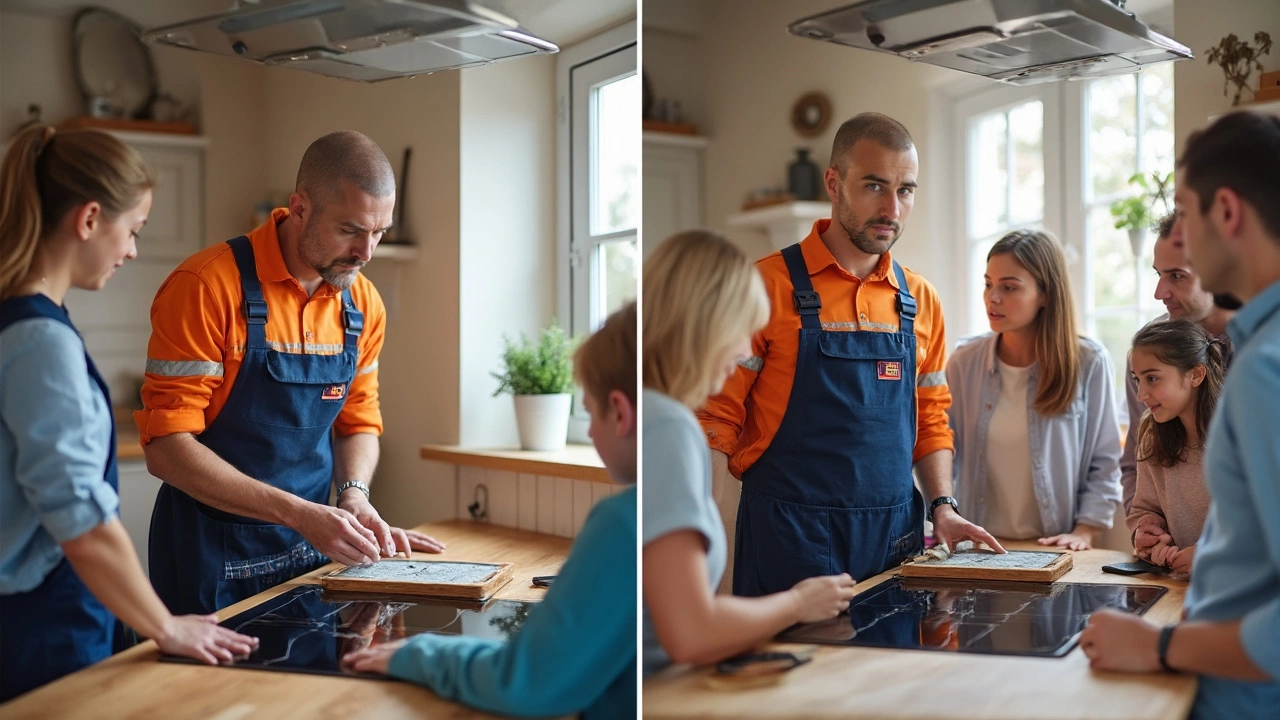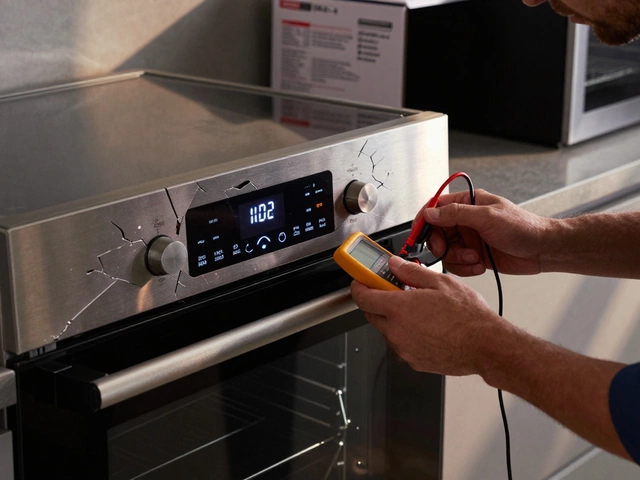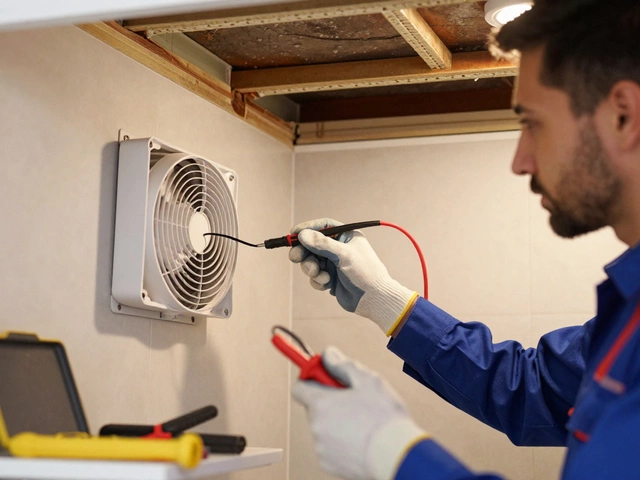Glass hobs look sleek in any kitchen, but a crack or chip quickly turns that modern look into an expensive headache. The big question: how much will it cost to fix? The answer isn’t always simple. Prices swing wildly based on what exactly is busted and if you’re hiring a pro or trying your luck with a DIY kit.
Here’s the straight truth. If it’s just a minor scratch or chip, you might be eyeing a repair bill as low as £50, maybe even less if you’re handy. But a big crack that needs the whole glass replaced? That jumps up fast—most folks see quotes in the £120 to £250 range, and that’s before you’re hit with call-out charges or hidden fees. And if you’re stuck with a top brand (like Neff or Bosch), replacement parts alone can push your cost even higher.
No two repairs are exactly the same. Sometimes it’s just the glass on top, sometimes the burners beneath get toasted too. Before you grab your wallet, let’s look at what usually breaks, what fixes cost the most, and how to figure out if you’re better off fixing or just replacing the hob outright.
- What Breaks Most Often (and Why)?
- Breakdown of Typical Repair Costs
- Factors that Change the Price
- Ways to Save and Avoid Future Repairs
What Breaks Most Often (and Why)?
Glass hobs can feel sturdy when you’re cooking up a storm, but they have their quirks and weak spots. The most common issue—by far—is cracks or big chips in the glass surface. Usually, this happens when something heavy (think: a pan, jar, or even a wayward mug) drops right onto the glass. It doesn’t take much. Even a small crack can spread fast, and when that happens, using the hob becomes risky.
Glass hob repair isn’t just about fixing the top; sometimes the heating elements underneath get caught in the crossfire if there’s been a big impact or the glass breaks completely. Faulty controls and broken touchpads are the next repeat offenders. These can get jammed from spills or just wear out after years of use.
“The majority of glass hob repairs we see are due to accidental damage—usually a dropped saucepan or a sudden temperature change,” says Darren Clark, a trusted local appliance engineer. “It’s rarely the actual electronics giving up first.”
Here’s what tends to go wrong most often:
- Cracked or shattered glass: The most dramatic, and unfortunately, the priciest fix.
- Chips and pockmarks: Small, but they can grow over time—especially if you keep using the hob or spill hot liquids into the cracks.
- Faulty burners or elements: Exposure to heat cycling, impact, or a failed glass seal can take these out.
- Unresponsive touch controls or knobs: Spills and grime can work their way inside or the parts can just wear out.
If you’re the data type, here’s a feel for which problems crop up most in UK kitchens based on last year’s repair claims:
| Issue | Percentage of Cases |
|---|---|
| Cracked glass surface | 52% |
| Damaged controls or touchpads | 21% |
| Heating element failures | 17% |
| Other/unknown faults | 10% |
One hard truth? Broken glass hob repairs are rarely from wear-and-tear. It’s nearly always a sudden accident or a spill that wasn’t cleaned up. If you want your hob to last, keep heavy stuff away, mop up spills right away (especially sugary ones—they’re brutal), and try not to crank the heat from cold to max in one go. That thermal shock can spell trouble for even the strongest glass.
Breakdown of Typical Repair Costs
So, what are you actually paying for when you call in a glass hob repair specialist? It’s not just the piece of glass. Here’s how the bill is usually split:
- Replacement glass panel: This is the most expensive bit. Standard models (think Beko or Hotpoint) usually run £70–£120 for the glass alone. Higher-end brands like Bosch or Neff can cost £130–£200 just for the glass.
- Labour: Most repair pros charge a call-out fee—expect £50–£80 before they even start. Then there’s hourly labour, typically £40–£65. A basic swap can take roughly one hour, but extra work (like dealing with stuck screws or hidden wiring) bumps it up fast.
- Parts and extras: If more than just the glass needs fixing—like new seals, sensors, or control knobs—add £20–£60 per part. Some brands only sell a full assembly, not just the glass, so your costs can double in a snap.
| Item | Low Cost (£) | High Cost (£) |
|---|---|---|
| Glass Panel (Standard) | 70 | 120 |
| Glass Panel (Premium) | 130 | 200 |
| Labour/Call-out (Per Visit) | 50 | 80 |
| Extra Parts | 20 | 60 |
If your broken glass hob is older or out of warranty, prices creep up. Some brands have pricey or hard-to-find parts, and you’ll often wait a week or two for delivery (unless you want to pay extra for express). Want to try a DIY fix? Replacement glass panels are easy enough to find online—Amazon and eBay usually stock them. Just know, you’re still out for the cost of parts and your own time, and there’s no safety net if you mess things up.
Bottom line? For a regular, mid-range hob, you’ll usually pay £120–£250 for a professional repair. That covers glass, labour, and minor extras. If things get fiddly or you need specialist parts, it can push past £300, so always get a proper quote before you say yes to any job.

Factors that Change the Price
If you’re wondering why the bill to fix a glass hob can go from “not too bad” to “ouch,” it’s all in the details. Let’s break down exactly what nudges those numbers up or down.
1. Type of Damage
Small chips and scratches are usually the cheapest fixes. If the glass is just nicked, a repair kit might do the trick. But full cracks or a shattered surface almost always mean swapping out the whole top, which ramps the price way up.
2. Brand and Model
This really matters. Not all hob repair jobs are created equal. Some brands use special toughened glass that’s pricier to replace. For example, a budget hob’s glass might cost £60, while a fancy branded panel can push £150 or even more. Older models sometimes make life hard, since parts can be harder to get. One engineer from FixMyHob put it simply:
“Replacement glass for premium makes like Bosch or Neff can easily double the cost compared to a generic brand.”
3. Labor Costs
If you call in a pro, expect to pay for labor on top of materials. In the UK, engineer call-out fees are usually between £40 and £70, plus £30-£60 per hour. Sometimes, the repair itself takes just 30 minutes, but if extra diagnosis or adjustments are needed, time adds up fast.
| Factor | Low End | High End |
|---|---|---|
| Call-out Fee | £40 | £70 |
| Glass Panel | £60 | £160 |
| Labor/Hour | £30 | £60 |
4. Location
Your postcode can affect cost more than you’d think. Big cities like London often see higher charges for both labor and parts, just because everything costs more. Out in the countryside, you might find it’s a bit less—and sometimes local handymen offer flat rates to get your broken glass hob sorted.
5. Warranty Cover
If your hob’s still under warranty, repairs could be free. If not, or if you’ve invalidated it by trying a DIY job first, you’re footing the bill.
All these things add up. It’s why two people with the same issue—say, a cracked surface—might pay wildly different amounts. Before you hand over cash, get a quote that spells out parts, labor, and any extra charges. There’s no shame in shopping around for the best deal when it comes to cost to fix hob problems.
Ways to Save and Avoid Future Repairs
If you want to dodge big repair bills for your glass hob repair, you’ve got to start with prevention. Glass hobs are tough, but they hate sudden impacts. Dropping something heavy—even a pepper grinder—can crack the surface instantly. The best way to protect your hob is to keep clutter off it and always use pans with smooth bottoms. Those rough or warped pans leave scratches that add up fast.
Next, keep it clean. Sounds basic, but burnt-on food acts like sandpaper, scuffing the glass over time. Wait until the hob cools down, then wipe with a soft cloth and a hob cleaner. Avoid those harsh pads or scouring powders; even if they claim to be 'glass-safe,' they can leave tiny scratches that eventually turn into big problems.
Want to really stretch your hob’s life? Here are a few simple things that work:
- Don’t drag pans. Always lift; dragging can chip or scratch the glass surface.
- Double-check pan sizes. Using a pan that’s way too big or small means heat goes where it shouldn’t, sometimes cracking the glass or damaging the electronics underneath.
- Don’t use the hob as a countertop. It’s tempting in a tight kitchen, but stacking groceries or even resting a cutting board can invite disaster.
- Fix little chips fast. Some silicone fillers on the market can buy you time if you nip a chip in the bud before it spreads.
Looking for ways to save money when a broken glass hob does happen? Always compare quotes. Some independent repair shops charge £40 less, on average, than national brands. Check your home insurance, too—sometimes accidental damage is covered, especially if you’ve got appliance add-ons in your policy. And if you’re tech-savvy, DIY glass replacement kits are out there for around £60, but these are best for folks who know what they’re doing. One slip and you risk making the fault worse.
Here's a quick snapshot of what you could pay for different types of hob repair:
| Repair Type | Estimated Cost (£) |
|---|---|
| Small chip or scratch | 50–100 |
| Full glass replacement | 120–250 |
| Burner/electrical fault (with glass replacement) | 180–350 |
| DIY kit | 60–100 |
If you’re on the fence about fixing or just buying new, always ask for a full price breakdown first. Sometimes the extra cost for fixing pricey brands (like Bosch or Neff) makes a replacement the smarter long-term bet. Either way, a bit of care saves cash down the road and keeps your hob repair costs in check.








